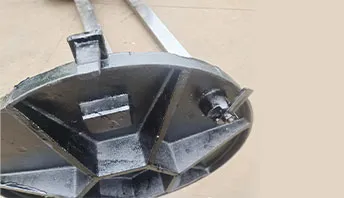
أغسطس . 01, 2024 02:39 Back to list
Overview of Steam Boiler Heating Systems and Their Applications in Industrial Settings
The Steam Boiler Heating System An Essential Component of Modern Heating Solutions
Steam boiler heating systems have played a crucial role in residential and industrial heating applications for over a century. These systems utilize the principle of converting water into steam, which is then circulated through pipes to provide efficient and reliable heating. This article explores the working mechanism, benefits, and applications of steam boiler heating systems.
At the core of a steam boiler system is the boiler itself, a closed vessel designed to heat water. The process begins when water is fed into the boiler, where it is heated by a fuel source—commonly natural gas, oil, or electricity. As the water temperature rises, it eventually reaches its boiling point, transforming into steam. This steam rises within the boiler and is channeled through a network of pipes to radiators or steam heaters located in various rooms or zones.
One of the primary advantages of a steam boiler heating system is its efficiency. Steam can carry a significant amount of heat energy, allowing it to warm spaces quickly and effectively. Unlike conventional hot water heating systems, where large volumes of water need to be circulated continuously, steam heating systems can operate with a smaller amount of water, thereby minimizing energy consumption. Additionally, steam radiators often generate heat more evenly and can maintain higher temperatures, making them ideal for colder climates.
steam boiler heating system

Another benefit of steam heating systems is their durability. Steam boilers are robust and can have long lifespans when properly maintained. They are also less prone to issues like freezing, which can occur in traditional hot water systems during extreme cold weather conditions. Furthermore, recent advancements in boiler design and technology have made modern steam boilers more environmentally friendly, as they operate with greater efficiency and reduced emissions.
Steam heating systems are versatile in their applications. They are widely used in large commercial buildings, such as factories, hospitals, and schools, where consistent and powerful heating is paramount. The ability to deliver steam over long distances also makes them suitable for central heating plants supplying multiple buildings. In residential settings, steam boilers can be an excellent choice for homeowners who appreciate the high levels of comfort and warmth they provide.
However, steam heating systems do require specific maintenance protocols. Regular inspections and servicing are critical to ensure the boiler operates safely and efficiently. Components such as pressure relief valves, water levels, and steam traps must be routinely checked to prevent malfunctions or potential hazards. Despite these requirements, many users find that the benefits of steam heating outweigh the maintenance efforts involved.
In conclusion, steam boiler heating systems are an essential component of modern heating solutions. Their efficiency, durability, and versatility make them suitable for a wide range of applications, from industrial facilities to residential homes. With proper maintenance and operation, steam boilers can provide reliable and effective heating long into the future. As technology continues to evolve, we can expect further innovations that enhance the performance and environmental impact of these vital systems, solidifying their place in the landscape of heating solutions.
-
High-Efficiency Commercial Oil Fired Steam Boiler for Industry
NewsJul.30,2025
-
High-Efficiency Biomass Fired Thermal Oil Boiler Solutions
NewsJul.30,2025
-
High Efficiency Gas Fired Thermal Oil Boiler for Industrial Heating
NewsJul.29,2025
-
High-Efficiency Gas Fired Hot Water Boiler for Sale – Reliable & Affordable
NewsJul.29,2025
-
High Efficiency Biomass Fired Hot Water Boiler for Industrial and Commercial Use
NewsJul.29,2025
-
High-Efficiency Biomass Fired Hot Water Boiler for Industrial Use
NewsJul.28,2025
Related PRODUCTS






















